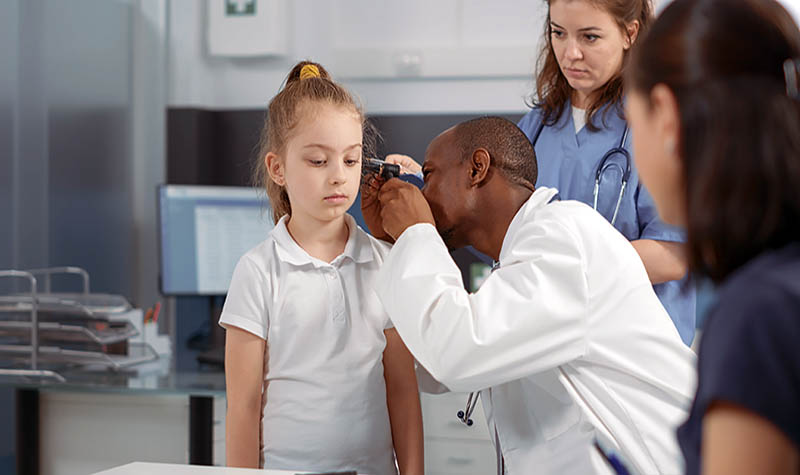
Children commonly experience ear infections during their early years. According to medical research, over 80% of children develop at least one ear infection before their third birthday. Ear infections, generally referred to as otitis media, may cause significant pain and discomfort and, if left untreated, can result in severe complications such as fever or a damaged eardrum. However, seeking timely medical attention can help treat the condition effectively. Pediatric ENT specialists treat ear infections in children. It’s crucial to recognize when medical attention is necessary. Here’s a guide to help you determine if your child needs to see a doctor.
Ear Infections in Children: When is it Time to See a Doctor?
The ear comprises three distinct areas: the inner, the middle, and the outer ear. The outer ear is the visible portion located outside the head, which includes the ear canal. The middle ear is situated inside the head, behind the eardrum, which is a thin, delicate membrane that plays a crucial role in sound perception. The inner ear refines sound further and transmits electrical signals to the brain for processing.
Ear infections normally occur in the middle ear. If a virus or bacterium becomes trapped in the middle ear, it can cause inflammation, pressure, and pain due to the sensitive nature of the eardrum. The resulting buildup of fluid and pus often exacerbates these symptoms. The eustachian tubes are small tubes that join the middle ear to the back of the throat. Their primary function is to drain excess fluid from the ears. However, various factors such as infections, allergies, or acid reflux can cause swelling in these tubes, hindering their ability to drain the mucus effectively. Moreover, children are more susceptible to ear infections due to the flatness of their eustachian tubes, which do not drain efficiently compared to adults.
What are the Symptoms of an Ear Infection?
Ear pain is the primary symptom of a middle ear infection due to the pressure on the eardrum. Additional symptoms include:
• Pain in the ear and head when trying to eat, drink, or sleep
• Fever
• Dizziness
• Ringing in the ears
If the fluid pressure builds up high enough, it can force the eardrum to rupture, and fluid will drain from the ear.
Ear infections often resolve on their own within 2-3 days. If your child is experiencing mild discomfort, wait and observe. However, if the symptoms persist beyond this period or if your child is too young to express their distress, it is essential to consult a pediatric otolaryngologist for a complete evaluation and possible treatment at the onset of symptoms.
It can be challenging to determine if your infant or toddler is experiencing an ear infection because they can’t directly express their discomfort. However, if you notice your child tugging or rubbing their ear, fussing more than usual, or refusing to eat and drink, it may be a sign of pain. Additionally, fluid coming from the ear is a clear indication of an infected middle ear. Seeking medical attention is essential if you suspect your child is experiencing an ear infection.